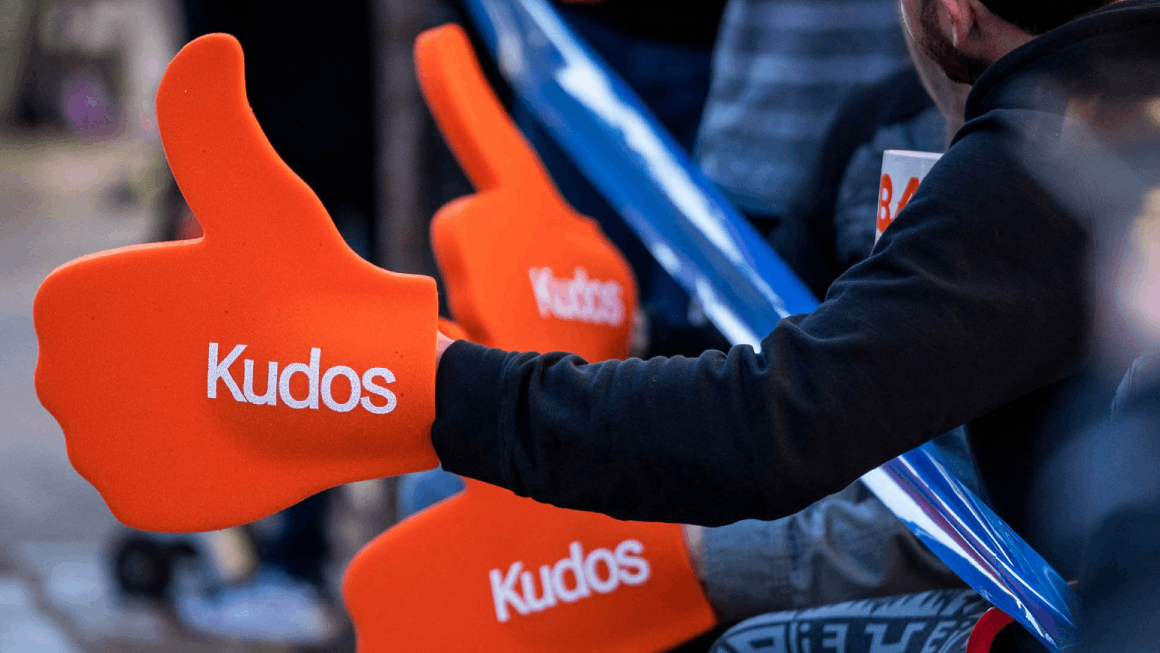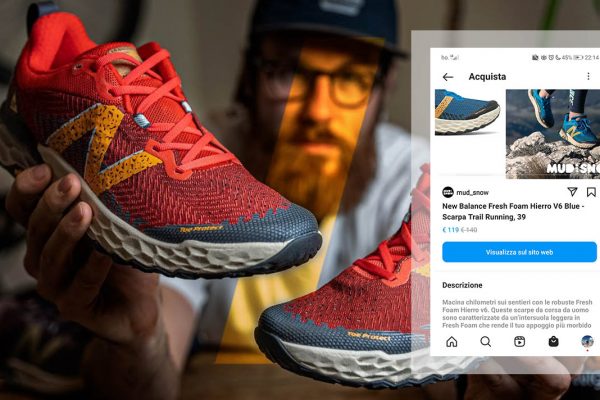Strava is a social network for active people, and sports and outdoor brands can leverage this channel to acquire new customers, sell products, create communities, and more. In this article, I aim to explain why this digital platform is a valuable addition to a marketing mix—shifting from gaining Kudos (the “like” feature on Strava) to achieving business results.
Before diving in, consider two points to help you assess the relevance of this article to you. If these don’t apply, don’t worry; I’ve tried to simplify some complex concepts for easier understanding. First, if you are familiar with this blog, you already know this article focuses on the sports and outdoor industry. However, even if that’s not your primary area, you might still find insights on marketing and digital platforms that could spark new ideas relevant to your field. Second, you should be familiar with the “budgeting” period, especially if you are a marketing manager or part of a marketing team. This is that particular time of year when you work closely with your CFO buddy to cut the marketing budget. Joking aside, it’s a crucial period for deciding which channels to invest in, how to optimize those investments, and how to avoid wasteful activities.
Marketing mix and Budgeting.
There is still a common misconception about the role of marketing in the business world, even in 2024. While I could write an entire book on the topic, Francesco Sordi has already done so (in Italian; search for “Scientific Marketing” for more). To summarize, marketing should guide business decisions related to product, price, placement, and promotion (the classic 4Ps). The marketing team should suggest the product demand, the right price point, the most effective distribution channels and strategies, and the best promotional activities to expand brand reach. However, as evidence of this widespread misconception, in most companies I’ve worked with, the marketing team is usually focused only on “Promotion,” one of the 4Ps. Key decisions are made by other teams, such as finance, product, or sales, depending on the company’s size.
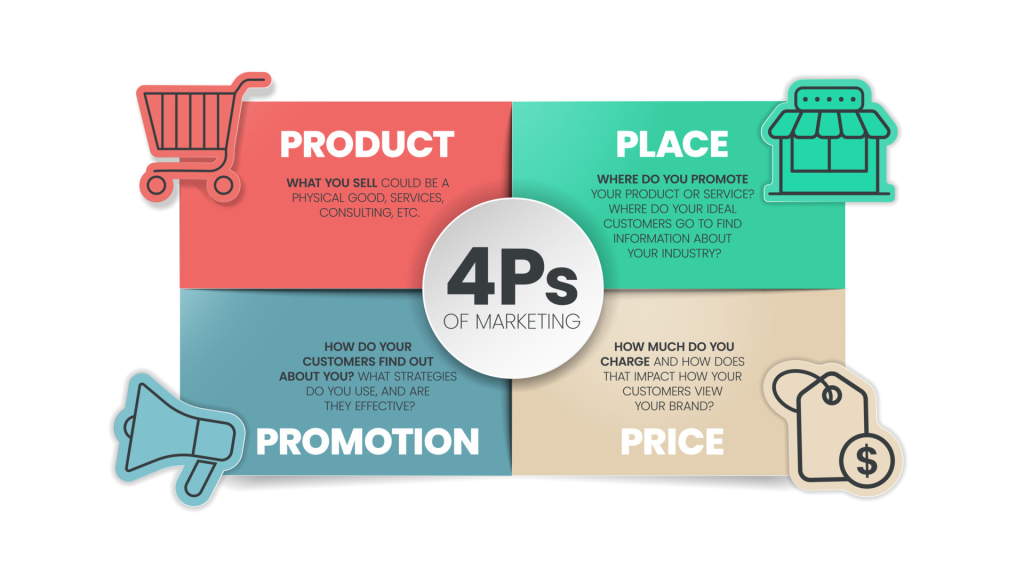
In this context, one of the marketing manager’s most important tasks is defining the marketing budget for the financial year. On average, a brand typically invests about 10% of its business turnover into its marketing budget. This budget comprises various costs, from advertising to marketing tools, agency fees, content production, digital and traditional media, events, PR, in-store activities, and more. When planning pure advertising expenses, it’s common to allocate costs to different channels like Paid Search, Affiliate, Social Media, Print, TV, and others. If you need a complete list, you might refer to an article about Digital Advertising channels from 2022 (although it may be slightly outdated). At the end of the budget table, there’s often a line labelled “Other“—one of my favourites. This portion is reserved for newer or experimental channels. Some 2024 examples? Spotify podcasts, interactive Out of Home displays, and, moving to the next section, Strava.
Why Strava Should Be Considered in Your Advertising Allocation.
An advertising channel can serve multiple purposes: driving awareness, generating website traffic, reinforcing a message, communicating a concept, or reaching new customers. Focusing on the digital segment of the budget, sports and outdoor brands often allocate a substantial part to popular digital advertising platforms like Google, Meta, and TikTok. A common challenge with these platforms is finding the right audience. Brands often seek outdoor enthusiasts, sports lovers, and athletic people. Targeting these audiences was easier before 2024, but in a cookieless environment, the precision of audience targeting provided by these platforms has decreased.
Enter Strava, you’ll see the sun. Strava users are already interested in the outdoors, sports, or athletics. This means you have a highly targeted audience with minimal risk of reaching the wrong people. This logic is not only applicable to Strava but also to other apps related to outdoor activities, tracking, and training. If you are looking for new customers with a high affinity to your brand, Strava is closely aligned with the sports industry, especially in cycling and running. The popular saying goes, “If it’s not on Strava, it didn’t happen.” Many runners, cyclists, and active commuters use Strava to track their activities. Given this alignment, investing in Strava might seem like a no-brainer. However, some entry barriers do exist, such as costs, time investment, and required team skills.
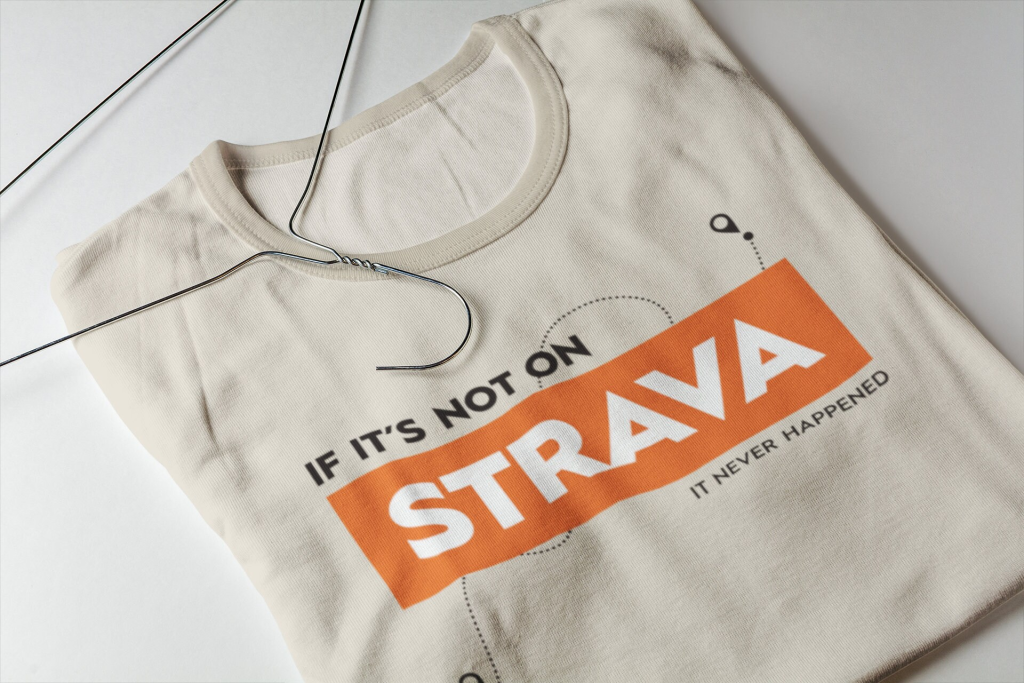
Strava leads the Peloton on Business Solutions for Advertising
Strava is a leader in the field, with a strong foundation. In 2024, it reported 125 million active athletes on its platform, spanning over 190 countries. For outdoor or sports brands looking for a targeted audience, Strava is unparalleled. Their business proposition is compelling: “You can be an interruptive ad for them on another platform, or their source of motivation on Strava.” Strava encourages brands to motivate athletes rather than simply push product catalogues. It’s a digital platform with a strong connection to the physical world, where users track real-world activities.
Strava’s most popular paid format is “Sponsored Challenges.” As described on their business website, “Sponsored challenges allow brands to set goals for active people and provide motivation in their lives.” As a brand, you can advertise a challenge for Strava athletes with various targeting options. However, it is a paid format and comes with costs that are typically not entry-level. Prices vary based on factors like countries, duration, and challenge type. Requesting a quote is a good starting point. Additional paid formats include Branded Content and Sponsored Segments, along with extra promotion tools like In-Feed Promotion and Email Promotion.

Are you curious about the cost of one Strava Sponsored Challenge? Fill out the form below and receive immediately an answer.
Return on Advertising Spend (ROAS) for the Brand.
Rather than delving into the specifics of advertising formats, let’s focus on the potential return for the brand. If we refer back to the marketing budget section, you might find yourself discussing with your finance colleague: “What’s the return from this advertising?” or “How can we justify this to the CFO/Directors?” The return depends on the objective of your campaign:
- Brand Recall Uplift: According to Strava’s business website, “Sponsored Challenges increase brand recall by an average of 133%* (Multisport Research 2022: Strava survey data).” Customers exposed to Sponsored Challenges or other formats may discover new brands they were previously unaware of.
- Intent to Purchase Uplift: Strava’s data suggests that its users are 2.15 times more likely to purchase sports clothing online and from brands they see advertised.
- Direct Digital Sales: If your challenge includes a coupon code or discount for participants, it can drive direct sales on your e-commerce platform.
- Athlete Emails: At the end of a challenge, you receive a list of participating athletes’ emails. This allows you to grow your contact database and engage with potential customers regularly, fostering sales, loyalty, and brand advocacy over time.
In summary, Strava offers a perfect match between audience and brand, and the returns can be measured in both exposure and sales (digital or even physical if done with a retailer).
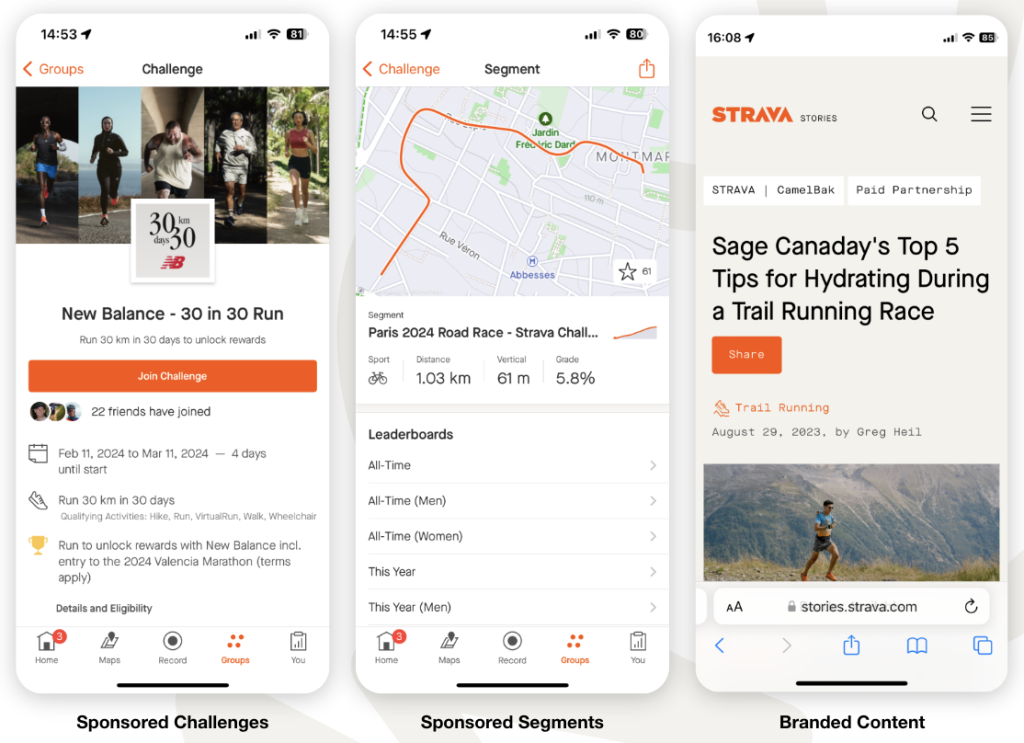
Organic formats to build Community and amplify Advertising.
For some reason, you may be unable to invest in paid formats on Strava, often due to budget constraints. However, you can still leverage organic formats to build a community around your brand. Note: This requires internal resources—team, skills, and time.
Using organic formats isn’t just for testing; it allows you to build a community. A 360-degree approach is most effective, integrating clubs, athletes, and challenges to drive community growth. Here are some examples:
- Clubs: Launch a Club and post regularly, similar to how you would manage a traditional social media profile. The difference is that you engage a highly targeted group of brand enthusiasts.
- Athletes: Encourage your top athletes to use the platform to increase product awareness and grow club audiences. These athletes can also serve as club admins, engaging directly with the community.
- Challenges: If you have a community built around your brand, you can amplify your Sponsored Challenges through clubs and athletes, posting them in the club’s feed and encouraging participation.
- Segments: Create and sponsor segments to engage athletes on specific parts of a course that event participants use in real life.
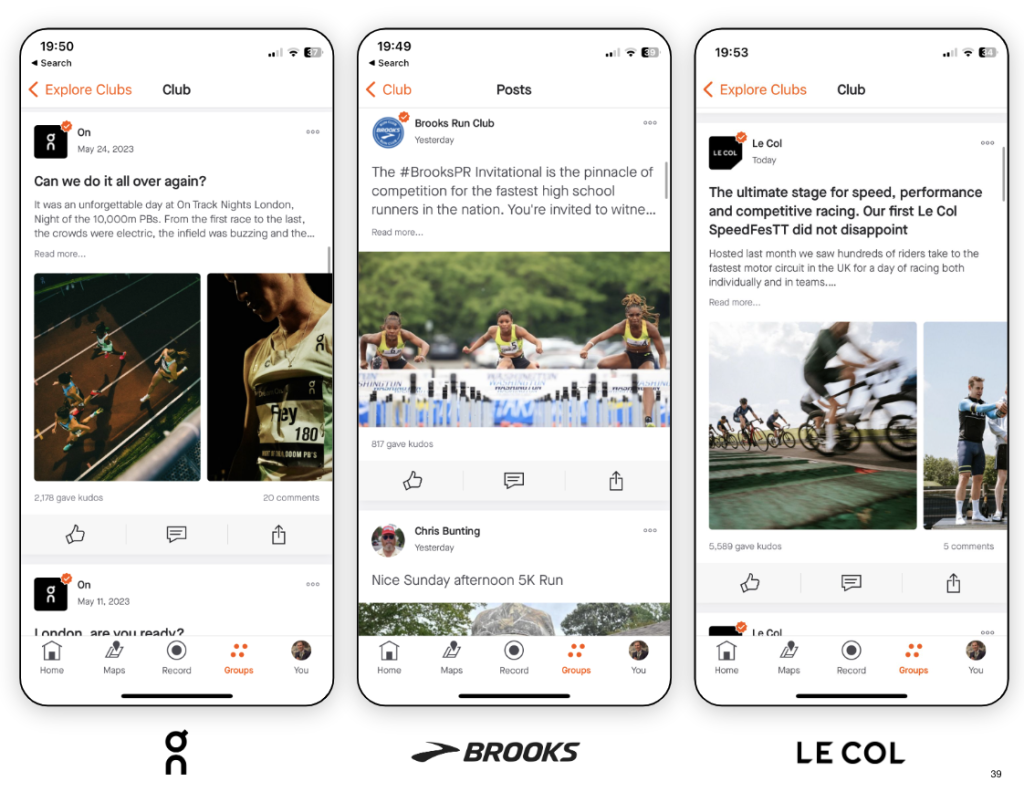
Alternatives to Strava for Advertising and Promotion.
Other apps are emerging with similar business solutions. Depending on your brand’s needs, you might explore apps focused on training, tracking, fitness, health, or other relevant topics. Below are a couple of interesting alternatives:
- Komoot: This Germany-based app for planning and tracking outdoor activities launched a business website in 2024. They offer similar solutions to Strava, such as Owned Reach (Partner Profile), Organic Reach (Community Expert), and Paid Reach (Sponsored Collections). Komoot focuses more on exploration and discovery, making it especially appealing for outdoor brands.
- Runna: This UK-based app focuses on training. Though I haven’t personally used it (I’m more of a Garmin user), their feed posting logic is similar to Strava’s organic reach approach.
Other apps like AllTrails and Relive don’t currently have business solutions, but it’s worth watching them for future opportunities. If you find anything relevant to add, feel free to reach out.
Actions after reading
If you need advice on using Strava as a marketing channel, please contact me. I’d be happy to help. Email: andreafagandigital@gmail.com
Side notes, credits, sources
Articles: Ali Momin on Linkedin, Strava Business website, Komoot Business website, Runna website.
Images: Screenshot from Strava internal deck (no sensible data), Etsy, Veectzy, Strava on X.

